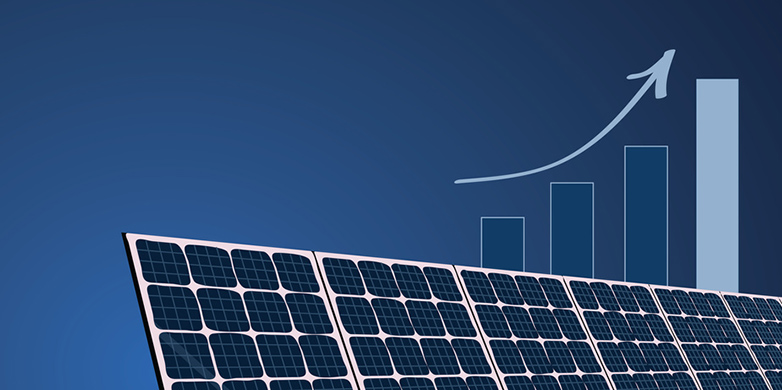Why energy forecasts often fail
Players in the energy industry and the policy domain often depend on forecasts. A closer look reveals that these predictions sometimes fall wide of the mark. Underestimating innovation dynamics is one reason why.
Once again the International Energy Agency IEA in Paris has adjusted its forecast: Renewables will be the fastest-growing source of electricity generation over the next 5 years [1]. This statement underlines the dynamic the energy transition has assumed. Renewables are fundamentally transforming the electricity sector: fluctuating feed-ins, changed load curves and low electricity prices all present substantial challenges for incumbent players (see blog). In such uncertain times, businesses and policy makers readily turn to energy forecasts in order to best prepare themselves for the future.
False predictions
Unfortunately, forecasts often go wrong. The IEA, for example, had to adjust repeatedly and significantly its forecasts for renewables [see 2]. In 2000, the agency did not attach any particular importance to renewables, even in the future. However, the share of renewables predicted back then was reached twice as fast as projected. Also the forecasts for 2010 have already hit the bin. How is it that proven experts can be wide of the mark? And how much confidence can we have then in current predictions?
When dealing with forecasts, two things are important: a healthy dose of scepticism, and the realisation that predictions are often simply impossible.
Unpredictable events and innovation dynamics
One reason why predictions fail is that past developments are extrapolated onto the future. This approach can go particularly wrong when major changes occur along the way. These include sudden events such as the financial crisis in 2008 or the Fukushima catastrophe in 2011 as well as far-reaching political or institutional transformations.

Furthermore, some initially inconspicuous developments may have great impact over the course of time. Technological innovations come into this category. They are often linked to self-reinforcing, non-linear effects: when a new technology diffuses successfully, it becomes better known, demand grows, production rises, and new companies enter. At the same time, complementary products and services develop (in the case of solar and wind, specific financial and insurance services, forecasting tools, remote monitoring and direct marketing). In consequence, costs fall, and this again drives technology diffusion. The carousel spins ever faster.
We cannot predict whether, when, and to what extent these innovation effects will occur – but it would be a mistake to underestimate them.
Economic interests
A third and important point is that forecasts are not neutral. They can have a great impact if many players refer to them for orientation. In this way, a forecast can become a self-fulfilling prophecy, as Moore’s Law for the semiconductor industry shows [4].
We can assume then that forecasts may be used intentionally to influence future developments and political and economic decisions. Considering this, we would be wise to ask who has formulated a particular forecast, and who stands to gain from the predicted development.
Beware of forecasts
The future is not and will not be predictable. Technological developments, in particular, are always subject to great uncertainties, and possible innovation effects often run counter to prognoses. In addition, at the beginning of their development, radically new technologies are often underestimated (for example, by established players) as well as overestimated (typically, by their developers). For areas that are changing rapidly, the meaningfulness of forecasts is thus very limited, if not questionable. At the same time, however, there is a great need for orientation.
In this respect, working with scenario methods can be a promising alternative to forecasts [3]. Scenarios avoid predictions, and instead throw light on various feasible and consistent development pathways, in order to show a broad spectrum of possible developments. Strategies can then be examined as to whether they hold up across different scenarios. In addition, companies can use scenario analyses strategically, to anticipate not only quantitative, but also structural changes.
Further information
[1] IEA: external pageIEA raises its five-year renewable growth forecast as 2015 marks record yearcall_made
[2] Some recent IEA forecasts:
- 2000: „Non-hydro renewable energy accounts for a small but growing percentage of global electricity — about 1.5% in 1997, projected to rise to 2.3% (603 TWh) by 2020. Nonetheless, hydropower’s share in electricity generation declines [from 18% in 1997] to 15% by 2020.“ IEA, World Energy Outlook 2000, Paris, p. 100-101.
- 2010: „In the New Policies Scenario, renewables-based generation triples between 2008 and 2035 and the share of renewables in global electricity generation increases from 19% in 2008 to almost one-third (catching up with coal). The increase comes primarily from wind and hydropower ... „IEA, World Energy Outlook 2010, Paris, p. 51.
- 2016: „Over the next five years, renewables will remain the fastest-growing source of electricity generation, with their share growing to 28% in 2021 from 23% in 2015.“ [1]
[3] Dominguez, D., Worch, H., Markard, J., Truffer, B., & Gujer, W. 2009. Closing the Capability Gap: Strategic Planning for the infrastructure sector. California Management Review, 51 (2): 30-50.
[4] Moore’s external pageLawcall_made for the semiconductor industry


